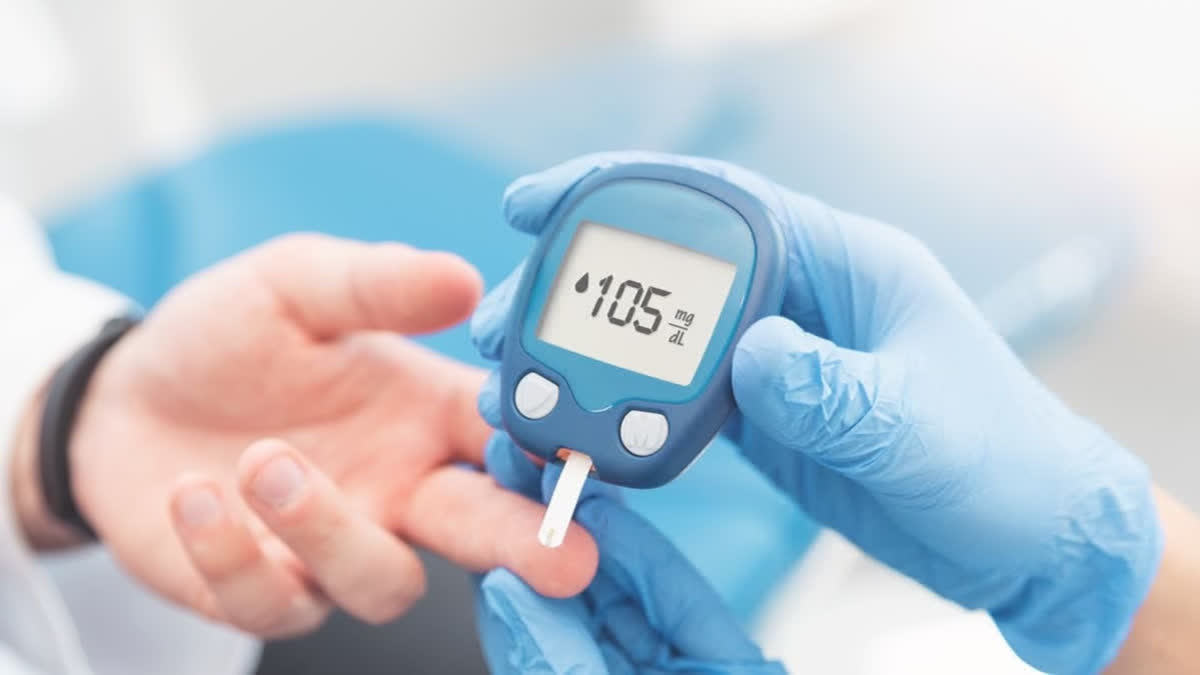New Delhi: The World Diabetes Day observed annually on November 14 provides an opportunity to raise awareness about diabetes as a critical global public health issue by emphasizing the collective and individual actions needed to improve the prevention, diagnosis and management of the condition.
History & Significance
In response to growing concerns about the health and economic threat posed by diabetes, the International Diabetes Federation (IDF) with support from WHO established World Diabetes Day in 1991. Subsequently, World Diabetes Day became an official UN day in 2006.
Diabetes is a serious health issue, affecting over crores of people worldwide. With rising rates, it’s crucial to spread awareness and encourage individuals to take control of their health.
Theme For 2024
The theme for World Diabetes Day 2024 is “Diabetes and Well-being,” highlighting the importance of not only individual health but also the collective strength of communities coming together to address the growing diabetes crisis. It emphasizes the significance of social, physical, and mental well-being in managing and preventing diabetes. It also highlights the issue of global health initiatives and collaboration and support.
What is Diabetes & Its Effect
Diabetes is a chronic disease, which occurs when the pancreas does not produce enough insulin, or when the body cannot effectively use the insulin it produces. This leads to an increased concentration of glucose in the blood (hyperglycemia).
Type 1 diabetes (previously known as insulin-dependent or childhood-onset diabetes) is characterized by a lack of insulin production. Type 2 diabetes (formerly called non-insulin-dependent or adult-onset diabetes) is caused by the body’s ineffective use of insulin. It often results from excess body weight and physical inactivity. Gestational diabetes is hyperglycemia that is first recognized during pregnancy.
Diabetes is a major cause of blindness, kidney failure, heart attack, stroke and lower limb amputation. Healthy diet, physical activity and avoiding tobacco use can prevent or delay type 2 diabetes. In addition diabetes can be treated and its consequences avoided or delayed with medication, regular screening and treatment for complications.
Global Prevalence of Diabetes
According to the International Diabetes Federation, an estimated 537 million adults aged 20–79 years worldwide (10.5% of all adults in this age group) have diabetes. By 2030, 643 million, and by 2045, 783 million adults aged 20–79 years are projected to be living with diabetes. Thus, while the world’s population is estimated to grow 20% over this period, the number with diabetes is estimated to increase by 46%, said the IDF.
The estimated prevalence of diabetes in women aged 20–79 years is slightly lower than in men (10.2% vs 10.8%). In 2021, there are 17.7 million more men than women living with diabetes.
Urban and rural distribution
According to IDF, in 2021, more people with diabetes live in urban (360.0 million) than in rural (176.6 million) areas – the prevalence in urban areas being 12.1% and in rural areas 8.3%. The number of people with diabetes living in urban areas is expected to increase to 596.5 million in 2045 (Figure 3.3), as a result of global urbanisation. By 2045, the predicted prevalence of diabetes in urban areas is estimated to increase to 13.9%, due to population ageing.
Undiagnosed diabetes
In 2021, almost one-in-two (44.7%; 239.7 million) adults living with diabetes (20–79 years old) were found to be unaware of their status. People with diabetes diagnosed later, rather than earlier, are likely to use more healthcare services due to greater likelihood of diabetes complications, placing an added burden on healthcare systems already under pressure.
Low rates of clinical diagnosis of diabetes are often a result of insufficient access to healthcare and lower capacity in existing health systems. Inexpensive screening strategies using validated diabetes risk scores, combined with diagnostic tests are, therefore, urgently needed to identify people with diabetes earlier and to expand coverage of preventive counselling, diagnosis and clinical care.
ICMR Study On Diabetes In India
Estimates show that 56.4 percent of total disease burden in India is due to unhealthy diets. Healthy diet and physical activity can reduce a substantial proportion of coronary heart disease (CHD) and hypertension (HTN) and prevent upto 80 percent of type 2 diabetes.
The Indian Council of Medical Research–India Diabetes (ICMR-INDIAB) study, a cross-sectional population based survey, assessed a representative sample of individuals aged 20 years and older drawn from urban and rural areas of 31 states, union territories, and the National Capital Territory of India.
The survey was conducted in multiple phases with a stratified multistage sampling design, using three-level stratification based on geography, population size, and socioeconomic status of each state.
A total of 113 043 individuals (79 506 from rural areas and 33 537 from urban areas) participated in the ICMR-INDIAB study between October 18, 2008 and December 17, 2020. The overall weighted prevalence of diabetes was 11·4%, prediabetes 15·3%, hypertension 35·5%, generalised obesity 28·6%, abdominal obesity 39·5% and dyslipidaemia 81·2%.
All metabolic non-communicable diseases (NCDs) except prediabetes were more frequent in urban than rural areas. In many states with a lower human development index, the ratio of diabetes to prediabetes was less than 1.
“The prevalence of diabetes and other metabolic NCDs in India is considerably higher than previously estimated. While the diabetes epidemic is stabilising in the more developed states of the country, it is still increasing in most other states. Thus, there are serious implications for the nation, warranting urgent state-specific policies and interventions to arrest the rapidly rising epidemic of metabolic NCDs in India,” the ICMR-INDIAB survey stated.



